Google Analytics is a free website analysis tool.
It enables you to see:
- Website traffic
- Actions taken by your users
To give you a deep insight into whether your content is helping you to achieve your goals:
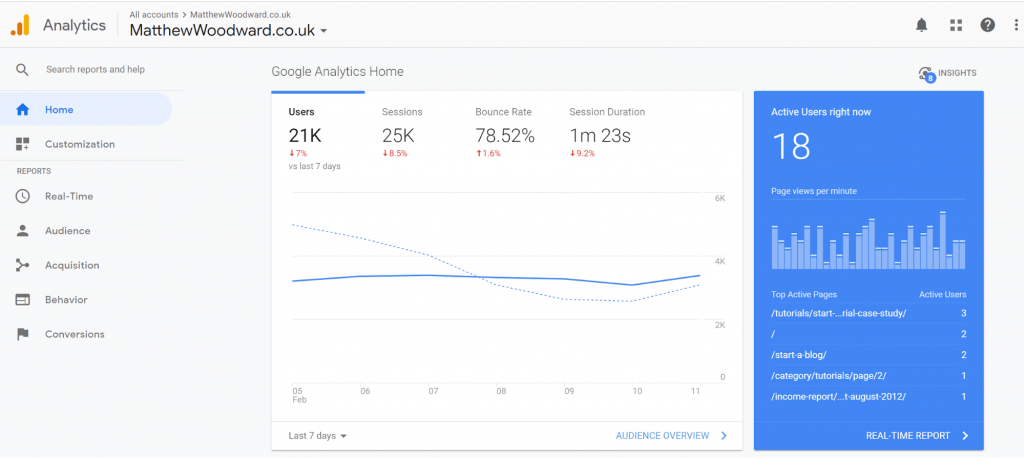
The information can help you make major changes to your site, and increase bottom-line elements like conversion rates.
9x Things You Can Track With Google Analytics
Google Analytics allows you to track:
- Downloads: how many users downloaded a resource
- Outbound link clicks: which third-party links users visited
- Affiliate link clicks: how many users visited your promotion
- Form submissions: how many people filled out elements of your site
- Page scrolling depth: the amount of a page users read
- Blog authors: your most popular authors on the site
- Blog categories: most-read topics
- Blog tags: as above
- eCommerce sales data: income generated from a traffic source
The number of these elements you’ll need to track will depend on your business.
So, how do you know what to track?
What Should You Track With Google Analytics?
To work out what you need to be tracking you’ll need to look at:
- Your current goals
- The actions you want your user to take
- The metrics to match them
And make a list of the most important things you’ll need to track.
This will vary from business to business.

Let’s take my blog as an example…
Example: Matthew Woodward’s Affiliate Website
My current goal is to increase my affiliate income.
To do that I need users to:
- Sign up to my mailing list
- Download content upgrades
- Click my affiliate links
To increase the chances they’ll buy.
This means I’d need to set all of these as trackable “goals” so I can see:
- When
- Where
- How often
It happens.
Below is an example of how this looks for affiliate link clicks:
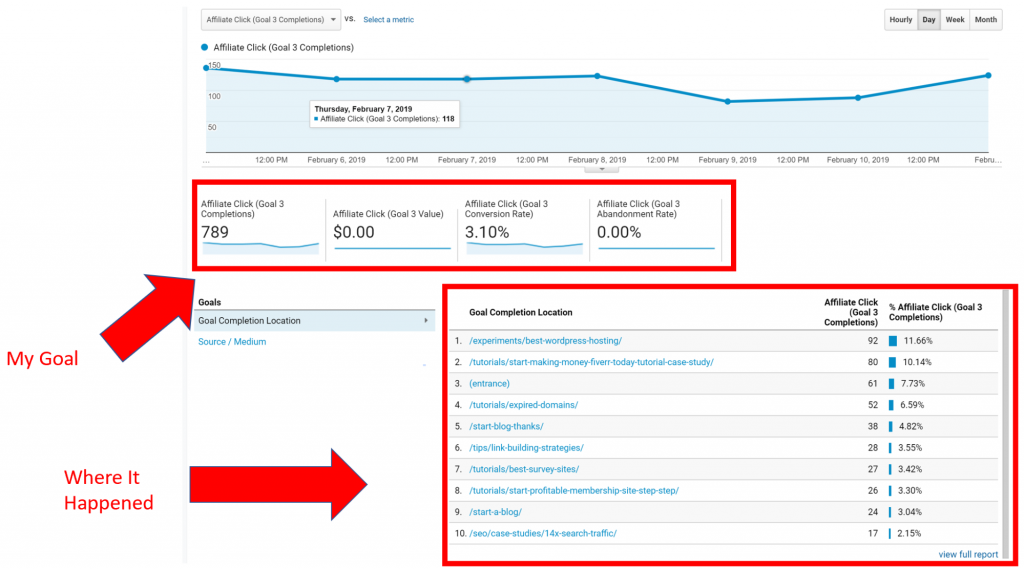
This information allows me to see if I’m achieving my goal.
But it also allows me to see which:
- Pages perform well
- Pages perform poorly
- Offers perform well
- Products users are interested in
To help me make informed decisions about my content, and adjust my strategy to increase conversions.
Okay, back to your site…
Take a couple of minutes to think about which elements are important to you.
You’ll likely need to be tracking some of the following:
- Link clicks
- Affiliate links
- Internal links
- Product placements
- Conversions
- Product purchases
- Mailing list signups
- Advert clicks
- Downloads
- Content upgrades
- eBooks
- Submissions
- Contact forms
- Surveys
- Blog comments
- Content
- Pages read
- Page scroll percentage
- Bounce rate
How To Install Google Analytics The Right Way
You may already have Google Analytics set up.
But I’m going to show you how the pros do it…
Click this link to sign up for a free Google Analytics account.
Then:
- Download and install this Google Analytics Dashboard plugin
- Connect it to your Google Analytics account
If you get stuck, just watch this video.
Then we’ll look at how to configure each section…
Event Tracking Configuration
Head to:
Google Analytics > Tracking Settings > Events Tracking
Inside your WordPress dashboard.
You should see a page like this:
![]()
Now turn all of these tracking elements on:
![]()
If you’re tracking affiliate links on your website, you’ll also need to set “Affiliates Regex” to match.
(Regex is the most common term used in your affiliate links.)
So I’d update the box to reflect that:

This will then notify Google Analytics that URLs containing this term are affiliate links.
Custom Dimensions Configuration
Go to the next tab, “Custom Definitions”.
Dimensions are the characteristics of the metrics you’re going to track.
If you’re tracking affiliate clicks you may want to know:
- Which authors write the most clicked posts?
- Which categories generate the most clicks?
- Which type of user clicks the most?
This gives you qualitative data like:
- Author: Matt Woodward
- Category: keyword research tools
- Users: returning
To inform future decisions.
On this page, assign a unique dimension to each of the available slots:
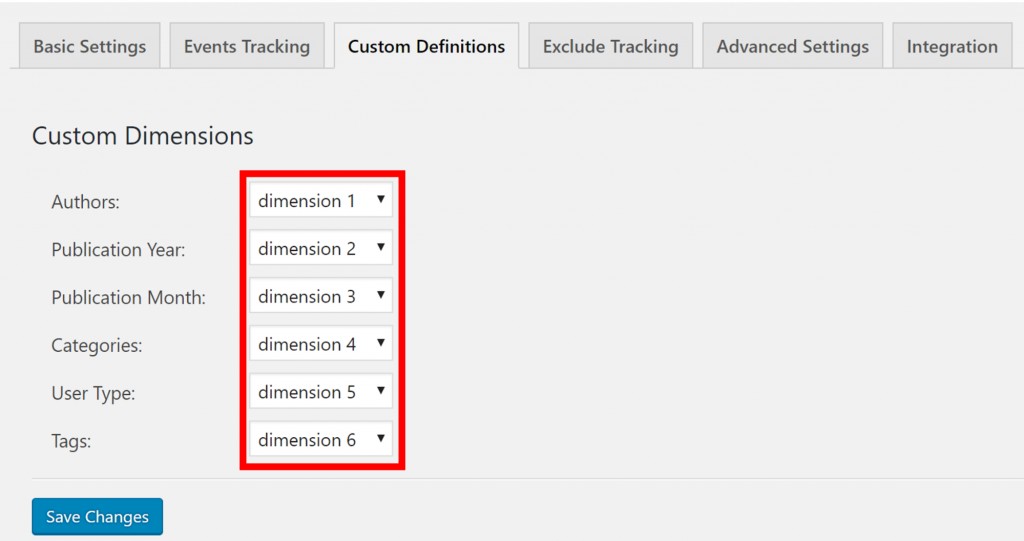
You’ll then see this reflected in your Google Analytics dashboard.
Exclude Tracking
Click the next tab, “Exclude Tracking”.
Select the boxes for admins and editors:
![]()
This will exclude their metrics from your results.
eCommerce Configuration
If you’re an eCommerce site, go to the next tab “Integration”.
Then scroll down and select the “enhanced ecommerce plugin” from the drop-down menu:
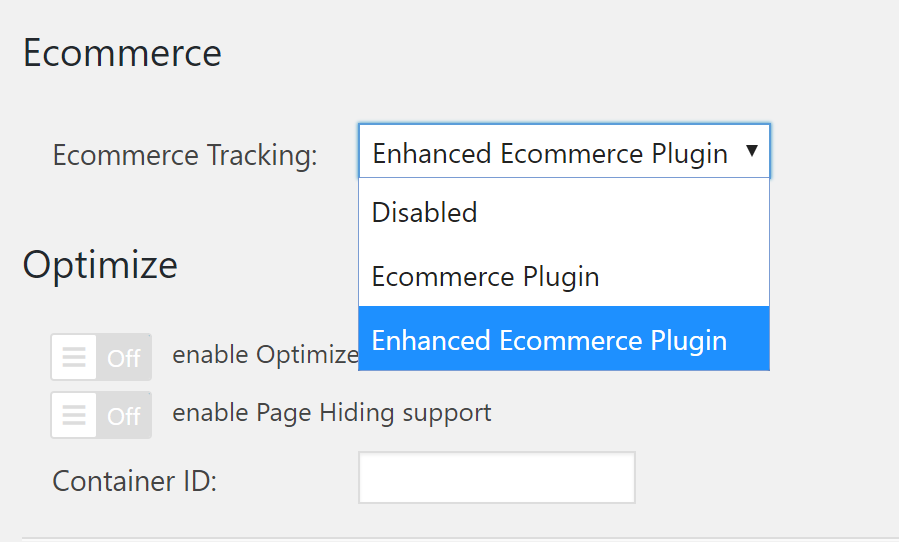
Then install this plugin, and follow the configuration steps on the product page.
You’ll also need to setup eCommerce tracking in Google Analytic, which you can do using the instructions here.
How To Setup Trackable Goals
Head over to the Google Analytics website.
Then go to:
Google Analytics > Admin > Goals > New Goal
Here you can create a goal for anything.
These are the goals currently running on my blog:
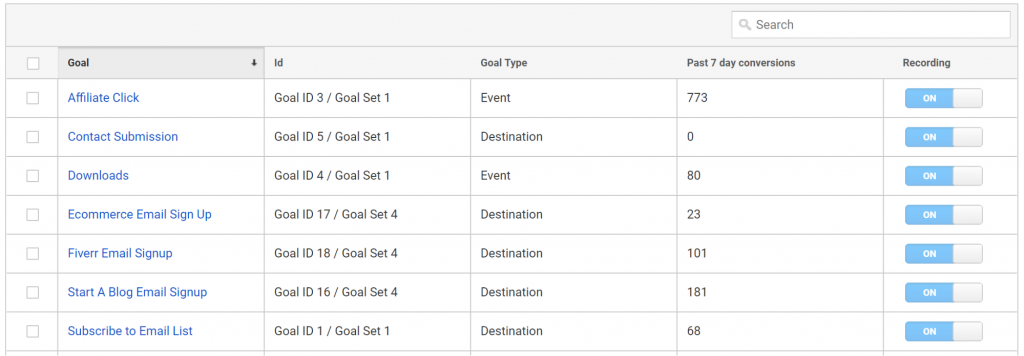
Let’s look at how to set up the two you’re most likely to be running on your site:
- Affiliate clicks
- Email sign ups
Example 1 – Affiliate Clicks
Here’s how to set this goal up:
- Goal setup
- Custom
- Goal description
- Set the name, “Affiliate Click”
- Select the goal type as “Event”
- Goal Details
- Set the category to, “Affiliate”
- Set the action to, “Click”
- Leave label and value blank (this can be changed later)
- Set the “Use the Event value as the Goal Value for the conversion” to “Yes”
This will now work with the plugin details you set up earlier to track link clicks.
It should look like this-
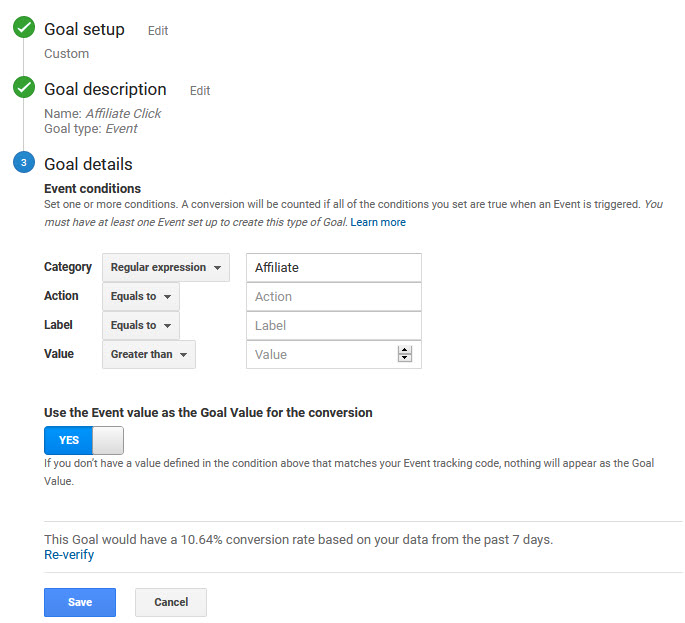
It displays in your goals dashboard like this:
![]()
And your main Google Analytics dashboard like this:
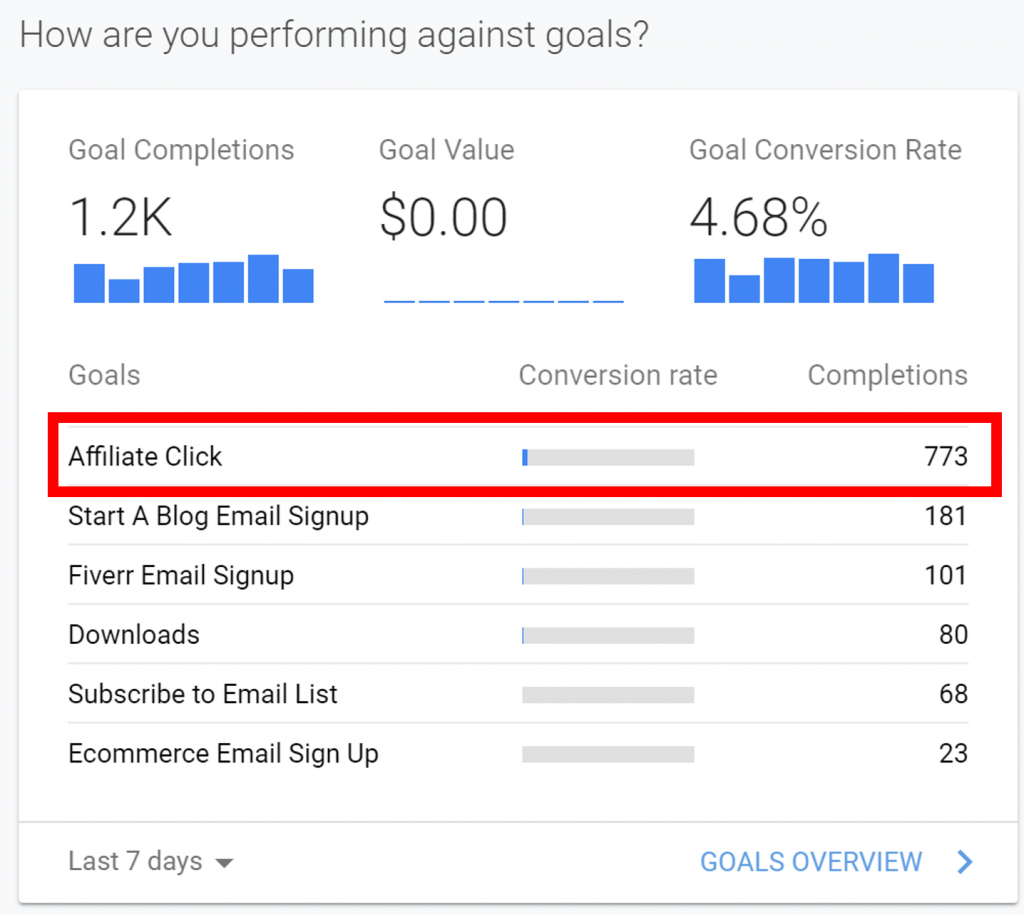
Example 2 – Email Sign Ups
To set this goal:
- Goal setup
- Custom
- Goal description
- Set the name, “Email sign up”
- Select the goal type as “Destination”
- Goal Details
- Enter the URL of your “thank you” page
This will then track users who end up on this page of your site. Once it’s setup it should look like this-

It displays like this in your goals dashboard:
![]()
And this in your main Google Analytics dashboard:
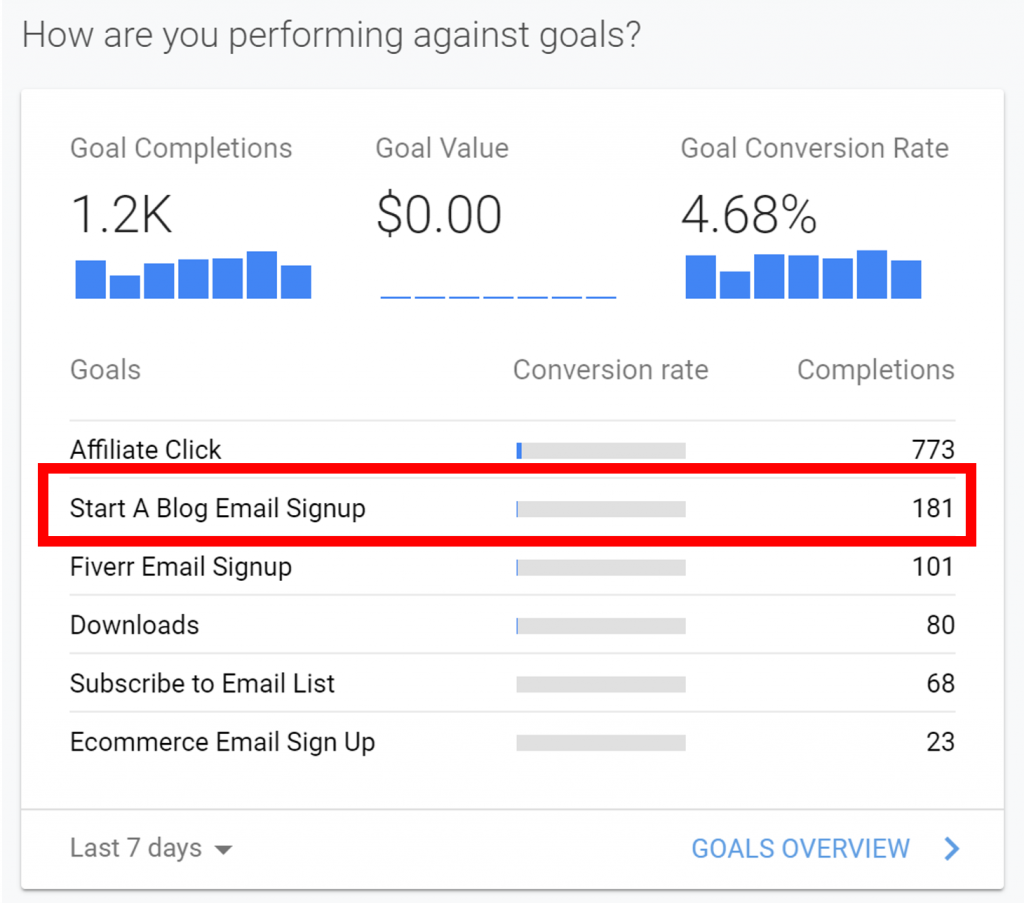
Further Reading: Google Analytics Resources
To learn more about how to use Google Analytics check out the resources below:
- Google Analytics for Beginners
- 4 Critical Google Analytics Goals
- How to Track Conversions in Google Analytics
And if you use an Amazon affiliate plugin like AAWP then it’s already adding affiliate tracking automatically-
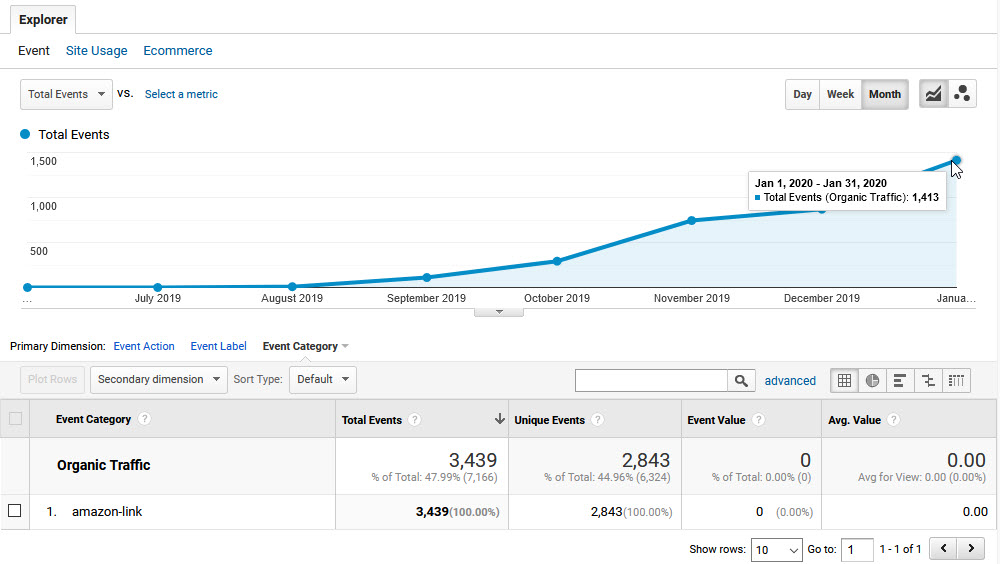
So you might want to check for Google Analytics integration with any plugins you use or even external services like CallRail which add’s Call Tracking data.
Final Thoughts…
Have you taken the time to configure everything correctly?
Make sure you have because we will be using this data to make decisions later and if you don’t have that data, you won’t be able to make an intelligent decision.
So take the guess work out of things by setting up Google Analytics correctly before moving on.
Then, it’s time to look at our next free tool, Google Search Console…